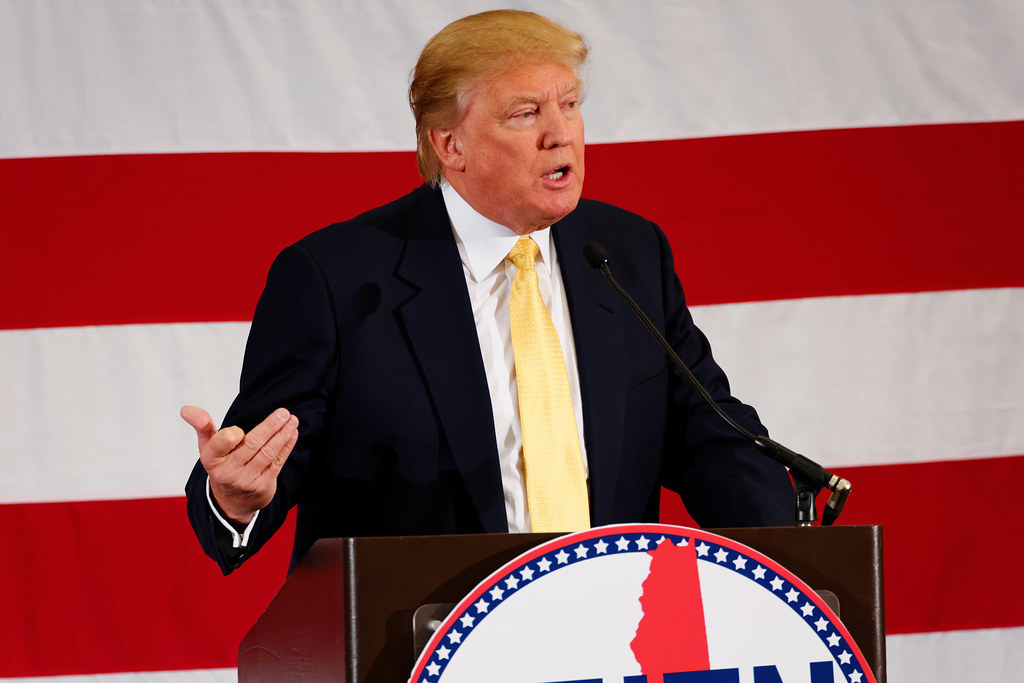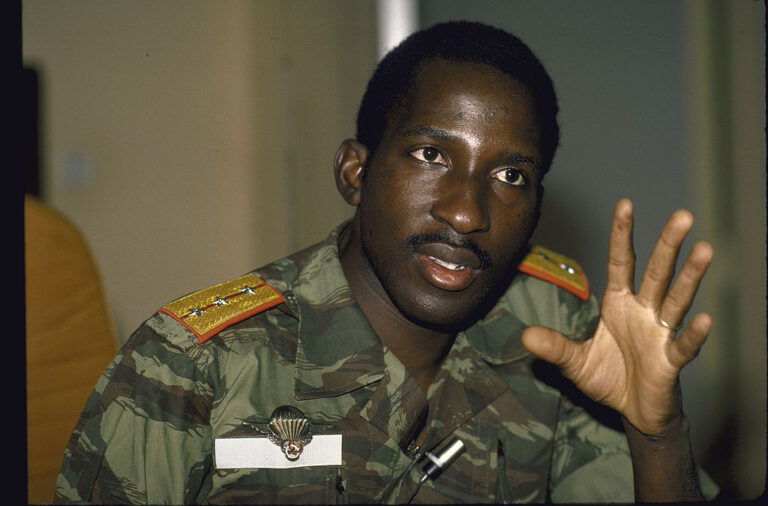
As Israel’s war on Palestine continues to inflict suffering on Gaza, Arab monarchies busied themselves with welcoming US President Donald Trump and signing multimillion-dollar trade agreements. Between May 13 and 16, Trump visited Saudi Arabia, Qatar, and the United Arab Emirates. This marked his first official foreign trip following his attendance at the pope’s funeral after taking office in January 2025. The White House leader arrived in the region amid ongoing nuclear negotiations with Iran, the genocide in Gaza, and discussions regarding the potential lifting of sanctions on Syria.
The visit took place after the failure of Trump’s tariff hike, which was revoked in the face of opposition from all countries, the majority of the American population, and even big capitalists. His tariff wars caused widespread global uncertainty and sustained economic chaos. The Economist noted, “This catalogue of foolishness will bring needless harm to America. Consumers will pay more and have less choice.” Of course, his loyal cheerleaders, like the Indian ruling elite, were, and still are, silent on Trump’s unilateral action.
Angry Arabs
The people in the Arab region harbour strong disapproval towards Trump. The United States aids and abetted the Israeli massacre in Gaza, which they cannot accept. This ongoing tragedy has persisted for 19 months, during which Israel has claimed the lives of at least 64,000 Palestinians, destroyed all hospitals and schools, and obstructed humanitarian aid, including food, water, medicine, and fuel. They reject Trump due to his threats to attack Iran, his devastating bombing campaign in Yemen, his sanctions against Syria, and his support for Israeli aggression in Lebanon and Syria.
Trump tried to relegate his aggressive imperialist image for now. Instead, he presented himself as a “peacemaker,” striving to soothe the turbulent waters in the region. All these actions, of course, aim to uphold the long-standing US influence in the region. During his stay in the Qatari capital Doha, he initiated direct negotiations with Hamas that secured the release of a US-born Israeli prisoner in exchange for a commitment of humanitarian aid to Gaza. More than half a million Gaza residents have been on the brink of starvation since an Israeli blockade began on March 2. The World Health Organization observes:
“The risk of famine in Gaza is increasing with the deliberate withholding of humanitarian aid, including food, in the ongoing blockade.
The entire 2.1 million population of Gaza is facing prolonged food shortages, with nearly half a million people in a catastrophic situation of hunger, acute malnutrition, starvation, illness and death. This is one of the world’s worst hunger crises, unfolding in real time.”
The United States has conducted four rounds of talks with Iran in Oman and Italy, aiming to establish a controlled nuclear programme in Iran while also securing the involvement of Iran’s allies in West Asia—namely, Lebanon’s Hezbollah, the Yemeni Houthis, and Shiite militias in Iraq. In return for this support, the U.S. plans to ease sanctions against Iran and refrain from any military action, whether directly or through Israel. Ongoing negotiations suggest that both sides are nearing an agreement, as indicated by Trump’s caution to Israeli Prime Minister Benjamin Netanyahu against launching any airstrikes on Iranian nuclear facilities.
Trump brokered a ceasefire deal with the Yemeni Houthis through the government of Oman. The US has called off a military strike against Yemen. This military operation, rather than defeating the Houthis, failed to weaken them in any significant way. The Houthis have already shot down seven U.S. drones, each valued at $30 million. Moreover, they destroyed two warplanes worth $67 million in the Red Sea. The 50-day invasion incurred costs exceeding $1 billion. In addition to its failure, this US aggression—according to Saudi leaders—could have jeopardised Trump’s visit to Arabia. The Houthis have the capability to attack US targets in the region, as well as the Saudi capital, Riyadh. The agreement with the Houthis mitigates the risk of attacks against US interests. However, the Houthis are currently unwilling to make any concessions to Israel. Attacks on Israeli targets have persisted. The ordinary Yemenis, however, “remain caught between the ongoing Israeli bombing campaign, US sanctions and the Houthis.”
Multi-million dollar deals
Both domestically and internationally, the US president faced criticism for merging his personal business interests with his official trip. He announced on social media that he would receive a Boeing 747-8 aircraft as a “gift” from the Qatari government, which would become the new Air Force One. He will keep the aircraft for his personal use at the end of his tenure. The Saudi monarchy holds a majority stake in a real estate company in Saudi Arabia, which has six contracts with his family to fulfil. Not to forget, in his first innings as president (2017-2020), his businesses flourished. In the first three years, he earned an estimated $650 million per year. COVID had a significant impact on these otherwise intriguing numbers. He was able to earn only US $450 million in 2020 as the economy shrank as a result of the pandemic.
In Riyadh, Trump and Saudi Crown Prince Mohammed bin Salman signed a historic economic and military deal. According to the White House, “Saudi Arabia’s $600-billion commitment to invest in the United States, building economic ties that will endure for generations to come. The first deals under the announcement strengthen our energy security, defense industry, technology leadership, and access to global infrastructure and critical minerals.” The deals include a $142 billion arms sale to Saudi Arabia, an $80 billion investment in a joint venture between Google and Oracle, and a $20 billion investment in US data centres by the Saudi company DataVolt. Additionally, AviLease, a top-10 global aircraft lessor based in the Kingdom, will buy $4.8 billion worth of Boeing aircraft, and Shamekh IV Solutions, LLC, will invest $5.8 billion in a Michigan plant to establish a high-capacity IV fluid facility.
The reactionary monarchy welcomed Trump at the beginning of his visit with an extravagant ceremony featuring a lavender carpet. Since 2021, Saudi Arabia has opted for lavender rather than red to greet state guests of the highest rank. This particular colour is said to symbolise the nobility of the Saudi dynasty. Trump’s visit included stops at various palaces and showcases of high-end luxury. Meanwhile, destruction, panic, and suffering afflict a region within 2,000 kilometres of Riyadh. Israel’s actions in Gaza, conducted with American support, represent one of the most significant crimes against humanity in recent history. Ordinary people in Lebanon, Syria, and Yemen are also victims of similar assaults. Iran has also been targeted by Israeli attacks, although the Trump administration has initiated discussions with them in Oman to annul, or at the very least limit, the nuclear programme of the Mullah regime.
With Trump and the Arab bourgeoisie preoccupied with business, the destruction of Gaza persists. The Israeli bombardment of the Gaza Strip intensified during the week of the US president’s visit to West Asia. Over 100 lives were lost on May 15, the anniversary of the Nakba. It is clear that without the backing of the United States, Israel cannot sustain such attacks. Meanwhile, Trump’s shrewd travel companion, billionaire Elon Musk, remains indifferent to the situation, openly supporting this genocide. He “called for eliminating Hamas and then treating Gaza the way the US treated Germany and Japan after World War II.” Furthermore, the Arab dynasties’ hobnobbing with the backers of this atrocity represents not only another cruel blow to the Palestinian people but also a profound insult to the ordinary citizens of the Arab lands.
In Qatar, Emir Sheikh Tamim bin Hamad Al-Thani signed an agreement with the current occupant of the White House to purchase 210 jets for a total of 100 billion US dollars. “It’s the largest order of jets in the history of Boeing; that’s good,” Trump stated during the signing. “So that’s a record, Kelly, and congratulations to Boeing.” The Emir of Doha also pledged to invest $38 billion to renovate the Al-Udeid military base, which houses approximately 8,000 US troops. This project will benefit American defence contractors, who profit significantly from weapons sales to Israel. As a diplomatic gesture, the Emir of Qatar offered his guest a gift (which some may consider a bribe) of a Boeing 747-8 aircraft. Despite numerous political and ethical concerns surrounding this matter, the US president-elect readily accepted the gift. He concluded his visit by announcing a $200 billion deal with the UAE, which included establishing an artificial intelligence centre there and investing in the hydrocarbon industry in the United States.
Meeting with Ahmed Al-Shara
In Riyadh, the U.S. president met with Syria’s interim president and head of Hayat Tahrir al-Sham, Ahmed al-Sharaa, in a meeting that would have been unthinkable just a few months ago. Although brief, the meeting was significant. “I think he has got the potential,” Trump remarked after a 37-minute discussion with the al-Qaida-linked former Syrian rebel. The individual previously labelled a “terrorist” had a $10 million bounty on his head, which was only rescinded last December. Reports indicate that he “urged” the Syrian leader to sign the Abraham Accords with Israel, expel foreign and Palestinian militants, collaborate with the United States to counter a resurgent Islamic State, and release some political prisoners. These conditions are tied to the potential lifting of U.S. sanctions on Syria. However, Trump had stated shortly before his visit that he had already decided to lift these sanctions. The importance of this meeting for regional balance is underscored by the participation of Saudi Crown Prince Mohammed bin Salman and Turkish President Recep Tayyip Erdogan, who joined the conversation by telephone. Turkey remains a staunch supporter of Syria’s Islamic fundamentalist regime.
This former jihadist, however, is eager to win American favour. He proposed to Trump a deal to mortgage Syria’s oil and gas, along with a potential plan to establish a ‘Trump Tower’ (a shopping centre) in Damascus. It appears that the Syrian president is drawing inspiration from the type of neo-colonial agreement forged between Ukraine and the United States. Additionally, he vowed to uphold the ceasefire agreement made in 1974 between dictator Hafez al-Assad and Israel, and he audaciously arrested two members of the Palestinian Islamic Jihad residing in Syria.
The Chinese Competition
While Trump’s Saudi and Turkish allies pressured the president to suspend sanctions against Syria, the potential for a commercial and political rapprochement between Syria and China also raised concerns for the White House. Recently, China has made notable strides in the region, establishing itself as the primary trading partner for several states, including Israel, and acting as a mediator between Saudi Arabia and Iran. China’s extensive strategic presence in the Persian Gulf has positioned it as a leading trading partner, energy importer, investor, and infrastructure developer. West Asia, in general, serves as a crucial land and waterway connector between Asia and Europe – transit routes are essential to the multi-trillion-dollar Belt and Road Initiative (BRI), China’s ambitious programme aimed at establishing its influence globally. Analysts say that the president was too keen to send a message that the Gulf is no longer China’s playground.
Trump & Netanyahu
Trump’s trip to the Middle East, notably bypassing Israel, has ignited speculation regarding a possible decline in relations between the White House and Tel Aviv. So far, apart from his unwavering support for the ongoing military actions, Trump has adopted various stances on Gaza. Before taking office, he urged Netanyahu to agree to a ceasefire with Hamas, seeking to avoid inheriting a complex array of issues. Shortly thereafter, he himself cast doubt on the January ceasefire, issuing an ultimatum for the release of prisoners held by Hamas and controversially suggesting the expulsion of Gazans to facilitate the construction of luxury resorts in the region. In anticipation of his visit, Trump initiated direct talks with Hamas, which ultimately led to the release of the last American prisoner, Israeli soldier Aidan Alexander, just prior to his arrival.
There are three main reasons for the deterioration of relations with Netanyahu. First, the talks between the White House and Iran are not acceptable to Tel Aviv, which wanted an all-out offensive against Iran. The second was an agreement between the United States and the Yemeni Houthis in early May, excluding Israel. The White House promised to stop bombing Yemen in exchange for an end to militia attacks on American merchant ships in the Red Sea. The Houthis are close supporters of the Palestinians. Thirdly, the blockade and sanctions against Syria will be lifted.
The US special envoy to the Middle East, Steve Wittkopf, and the Persian Foreign Ministry are key players in the US-Iran deal. Washington is sticking to its old demands. Washington’s demands include the cessation of the nuclear programme and the cessation of support for Hezbollah. This initiative is also an attempt to undermine Tehran’s regional influence, but the lifting of sanctions is crucial for Iran. In any case, the “peacemaker” Trump has warned that if negotiations fail, he could launch a military strike targeting Iranian nuclear facilities.
As for Yemen, the White House appears to have reached an agreement of its own with the Houthis. While Houthis continue to fire missiles into Israel, Tel Aviv, on the other hand, regularly attacks targets in Yemen.
Netanyahu had no option but to oppose the lifting of sanctions on Syria. Tel Aviv exploited the chaos that followed the fall of Bashar al-Assad in 2024 to bolster its military presence in southern Syria, particularly in the Golan Heights, which it has occupied since 1967. Since then, Tel Aviv has executed approximately 750 airstrikes near the Syrian presidential residence, ostensibly to protect the Druze community, a minority group. However, reports indicate that informal discussions are taking place between Tel Aviv and the new Syrian government, although Israel remains reluctant to engage in any agreement that could curtail its expansionist ambitions.
The protagonist of MAGA is unwavering in his pursuit of US imperialist interests, indifferent to the potential consequences. He shows little concern for his long-time allies, who may need to step back temporarily for the sake of American priorities. During his visit, the tycoon, who has projected an illusion of peace in the Middle East, reiterated his stance on the ousting of the Gazans.
No more genocide!
The Arab bourgeoisie and the United States are feigning efforts to establish amicable relations in a bid to impose a compromise regarding Gaza. However, the unfortunate inhabitants of Gaza are unlikely to find any solace in this agreement. Egypt is spearheading a proposal for the reconstruction of the enclave, capitalising on the dire circumstances faced by the Palestinians. The plan requires the removal of Hamas from power and the establishment of a technocratic government before rebuilding the devastated area. Nevertheless, this Egyptian option appears to be less perilous than Trump’s proposal to expel Palestinians and Netanyahu’s plan for the liquidation of Palestine. The Palestinian Authority undoubtedly supports the Egyptian position.
We must stand resolutely with the Palestinian people against the opportunist designs of the Arab bourgeoisie and the oppression inflicted by Zionism. No more killing! We demand the immediate withdrawal of Israeli troops from Gaza, Lebanon, and Syria. No more attacks in Yemen. No more imperialism in West Asia! The Palestinians and the people of the region wish to live!



1 thought on “Arab Elites Welcome Trump As Massacres In Gaza Continue”